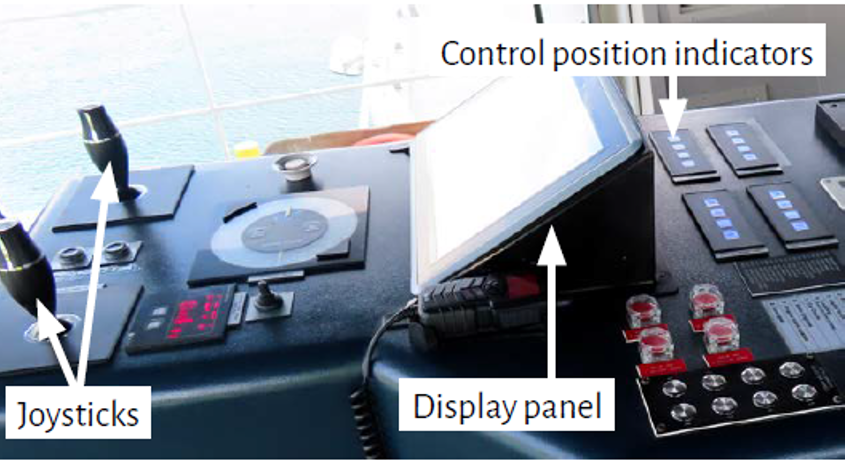MAIB: Who is in control?
What happened
Control was lost of a vessel and it almost ran aground as a result. Fortunately, the crew were able to regain control before the vessel (a ferry) grounded, and the voyage continued safely.
The vessel was fitted with a Voith Schneider Propeller. The system could be controlled from joysticks on one of three consoles on the port, starboard or centre of the bridge. Control was exchanged by pressing a command button at one of the consoles and confirmed by pressing the button a second time. An audible tone would indicate when there was misalignment between the joysticks of the two consoles and the transfer would not take place.
The Master was using the starboard console to manoeuvre the ferry out of port on the morning of the incident. The helmsman pressed the command button on the centre console to request control as normal and the audible tone sounded. The master, believing control had been passed, set the starboard console’s joystick to the zero position. However, the audible tone continued. This was confusing. Neither the Master nor helmsman knew who was in control. The ferry slowed and swung to port. The bridge team attempted to take control at each console station and in doing so the control passed backwards and forwards many times.

The audible tone stopped shortly afterwards, indicating that the transfer process had timed out. The bridge team then zeroed all the joysticks and successfully transferred control to the centre console after pressing the command button at that station twice. The ferry was able to pull back from the beach and resume its passage.
What went wrong
- The angle of the control display panels made it difficult to see which console was in control – previous modifications to the position of the display panels had inadvertently made it harder to see them;
- Confusion arose and neither the Master nor helmsman knew who was in control.
Lessons
- Equipment:
- With dual or other complex control systems, ensure there is a robust system for identifying which console has control at any time;
- Control indications should be unambiguous and any modifications need to be carefully considered so that the fixing of one problem does not create another.
- Training and competence: When the equipment did not operate as expected it took time for the bridge team to regain control. This circumstance was in the manual – greater familiarity with procedure may have quickened the bridge team’s response to the loss of control.
Members may wish to refer to
Safety Event
Published: 12 June 2023
Download: IMCA SF 14/23
IMCA Safety Flashes
Submit a Report
IMCA Safety Flashes summarise key safety matters and incidents, allowing lessons to be more easily learnt for the benefit of all. The effectiveness of the IMCA Safety Flash system depends on Members sharing information and so avoiding repeat incidents. Please consider adding [email protected] to your internal distribution list for safety alerts or manually submitting information on incidents you consider may be relevant. All information is anonymised or sanitised, as appropriate.
IMCA’s store terms and conditions (https://www.imca-int.com/legal-notices/terms/) apply to all downloads from IMCA’s website, including this document.
IMCA makes every effort to ensure the accuracy and reliability of the data contained in the documents it publishes, but IMCA shall not be liable for any guidance and/or recommendation and/or statement herein contained. The information contained in this document does not fulfil or replace any individual’s or Member's legal, regulatory or other duties or obligations in respect of their operations. Individuals and Members remain solely responsible for the safe, lawful and proper conduct of their operations.
